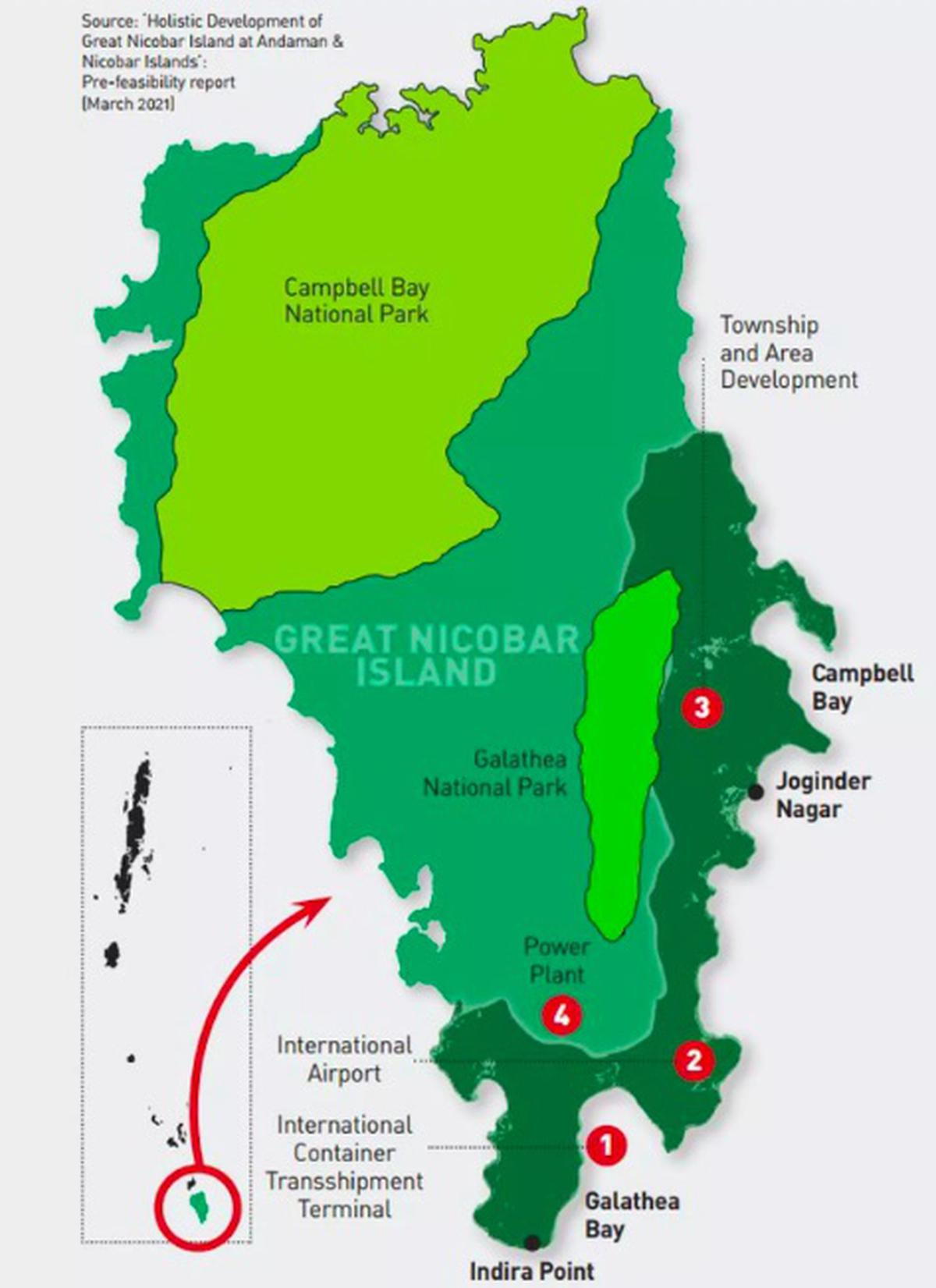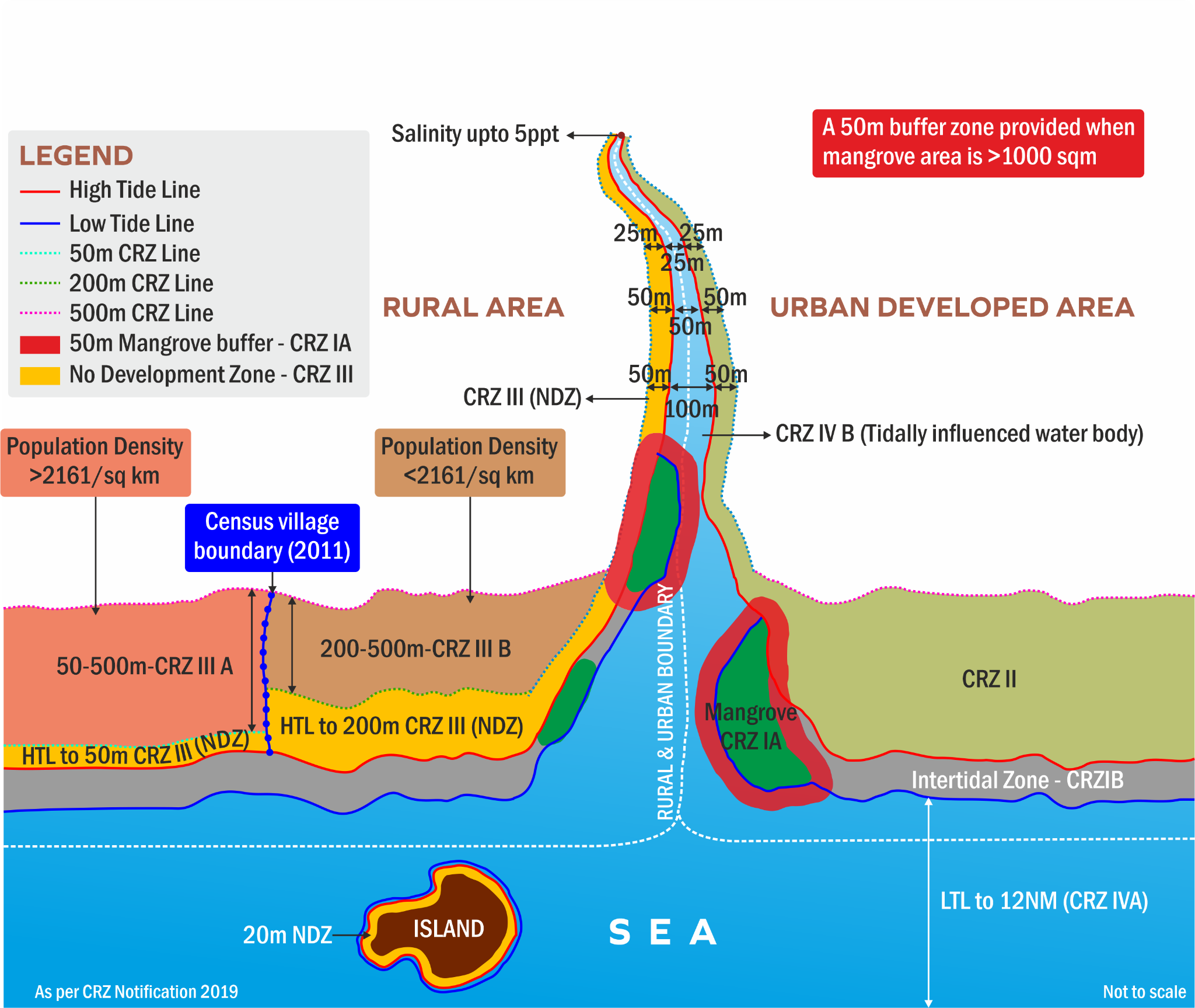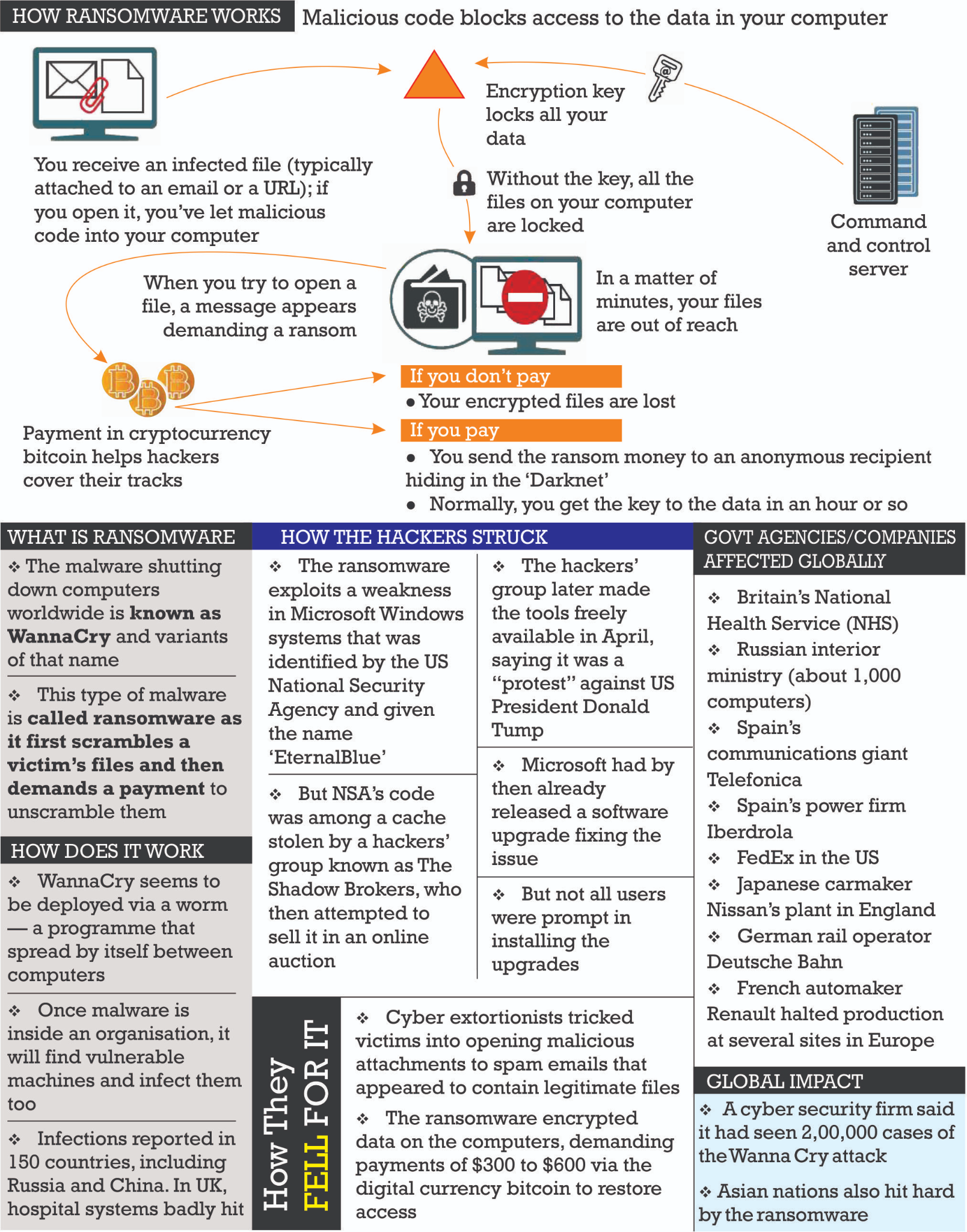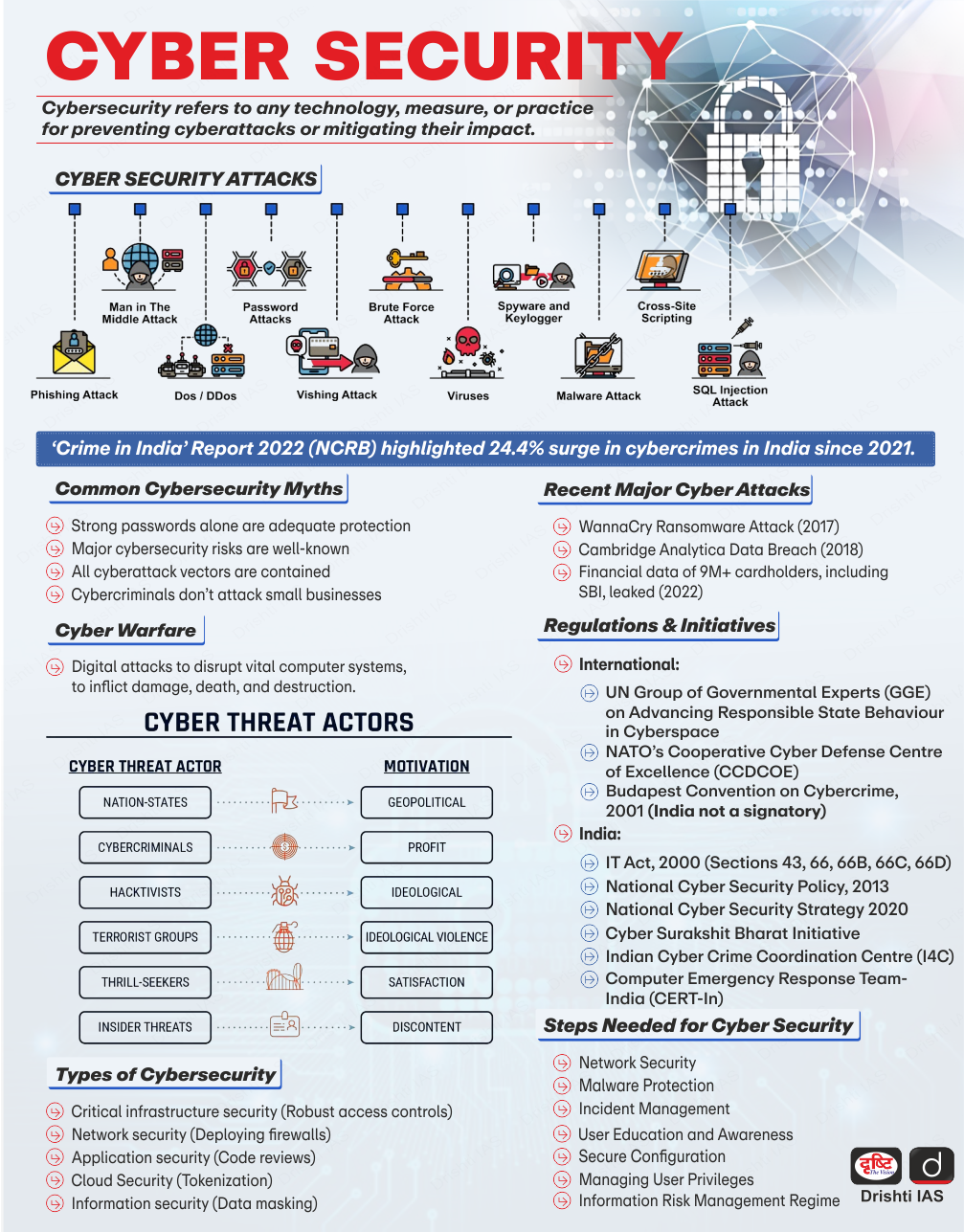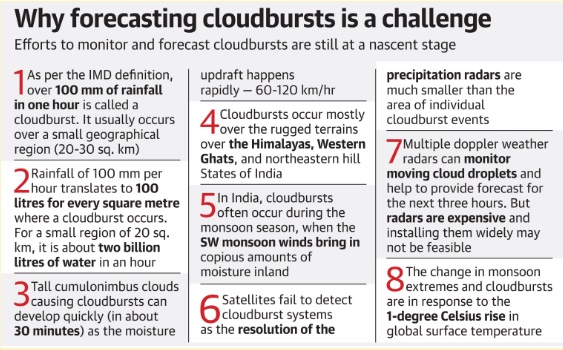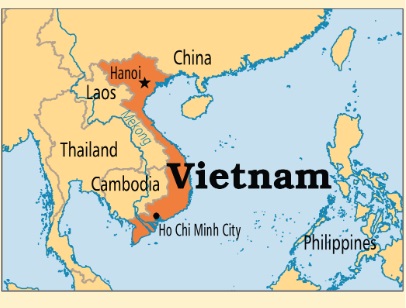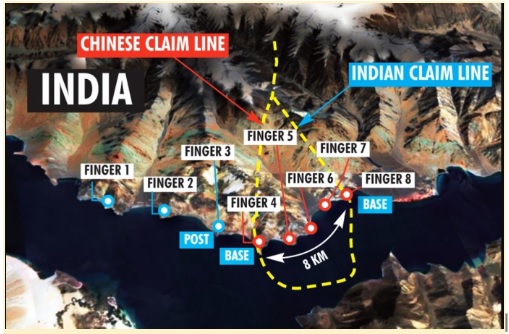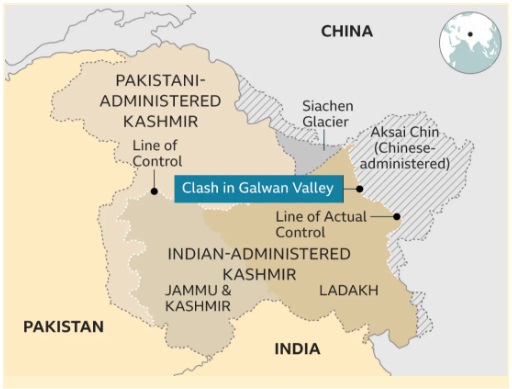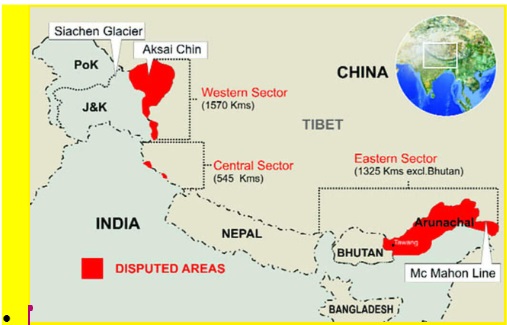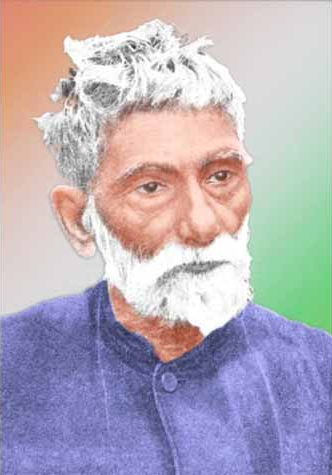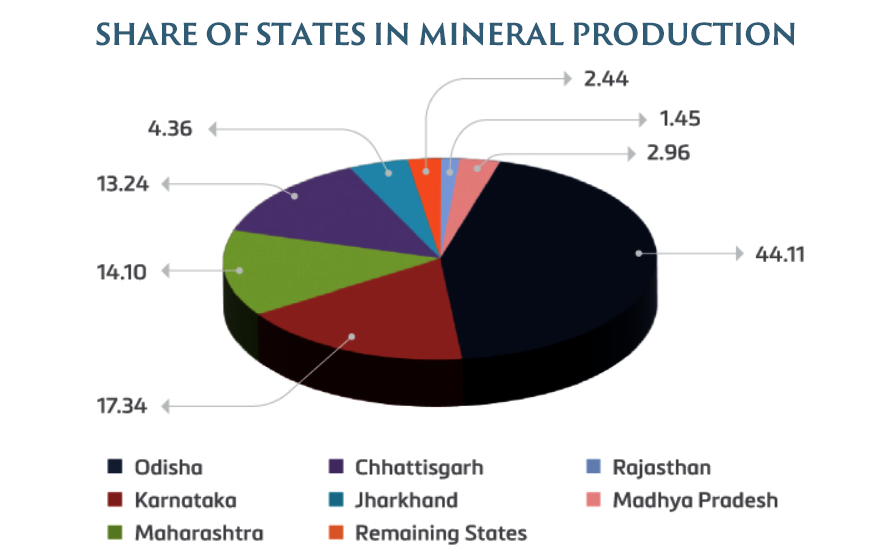Biodiversity & Environment
Nicobar Port Plan From No-Go Zone to Permitted Area
For Prelims: Great Nicobar Project, NITI Aayog, National Green Tribunal, International Container Trans-shipment Terminal, Malacca Strait, Environmental Impact
Assessment, Coastal Regulation Zone
For Mains: Significance and Concerns Related to Great Nicobar Island Project, Coastal Regulation Zone, Conservation
Why in News?
The Great Nicobar ‘Holistic Development’ Project, spearheaded by the NITI Aayog (National Institution for Transforming India) has stirred considerable debate.
Initially flagged for potentially falling within a no-go zone, the project has now been deemed permissible by a high-powered committee (HPC) appointed by the National
Green Tribunal (NGT).
What is the Great Nicobar ‘Holistic Development’ Project?
- Project Overview: Launched in 2021, the Great Nicobar Island (GNI) project is a mega infrastructure initiative aimed at transforming the southern end of the Andaman and Nicobar islands.
- Components:
- Trans-shipment Port: An International Container Trans-shipment Terminal (ICTT) expected to bolster regional and global maritime economy.
- Greenfield International Airport: Facilitating global connectivity.
- Township Development: New urban development that may include a Special Economic Zone.
- Power Plant: A 450 MVA gas and solar-based power plant.
- Strategic Location: Positioned near the Malacca Strait, a key maritime route connecting the Indian Ocean to the Pacific Ocean.
- The project aims to facilitate the deployment of additional military forces, larger warships, aircraft, missile batteries, and troops.
- Close to the Malacca Strait, the upgrade is crucial for India’s strategic interests, particularly against the backdrop of increasing Chinese presence and influence in the region.
- Project Impact on Environment:
- Deforestation: The project will involve the felling of approximately 8.5 lakh trees in the rich rainforests of Great Nicobar.
- Wildlife Displacement: The de-notification of the Galathea Bay Wildlife Sanctuary and the declaration of a “zero extent” eco-sensitive zone for Galathea National Park threaten critical habitats.
- Ecological Destruction: Home to unique and threatened tropical evergreen forest ecosystems, the construction may cause irreversible damage to the island’s biodiversity, including endemic species like the Nicobar Megapode and leatherback turtles.
- Biodiversity Protection: The project contradicts India's commitments under the Convention for Biological Diversity to halt and reverse biodiversity loss by 2030 and protect areas of high ecological importance.
- Concerns of the Local Tribes: The Shompen and Nicobarese tribes, primary inhabitants of the island, face significant displacement and cultural disruption.
- Despite claims of protecting tribal interests, local communities have not received adequate responses to their concerns and requests for relocation.
- Local communities withdrew their consent for the project in November 2022, which is necessary for its implementation as the land is part of the tribal reserve.
- Technical and Legal Issues:
- Seismic Risks: Great Nicobar rests on a major fault line and is prone to earthquakes and tsunamis. There has been no comprehensive risk assessment conducted for these
natural hazards. - Inadequate Reports: The Environmental Impact Assessment (EIA) report lacks compliance with several Terms of Reference and fails to address critical environmental and
social impacts. - Legal Challenges: Many approvals and exemptions granted under various laws protecting forests, tribal rights, and coastal ecosystems could face legal challenges in
courts and tribunals.
- Seismic Risks: Great Nicobar rests on a major fault line and is prone to earthquakes and tsunamis. There has been no comprehensive risk assessment conducted for these
Why was the Project Previously Flagged in a No-Go Zone?
- Initial Information: The Andaman & Nicobar Coastal Management Authority stated that the port, airport, and township spanned 7 sq km in the Island Coastal Regulation Zone-IA (ICRZ-IA), where port activities are prohibited.
- Environmental Concerns: The ICRZ-IA areas ecologically sensitive zones including mangroves, corals, coral reefs, sand dunes, mudflats, marine parks, wildlife habitats, salt marshes, turtle and bird nesting grounds
- Permitted Activities in ICRZ-IA: Eco-tourism activities like mangrove walks and natural trails, Roads and roads-on-stilts for defence and strategic projects, with necessary permits.
What is the Island Coastal Regulation Zone (ICRZ)?
- The Central Government has declared certain coastal stretches of the Andaman & Nicobar Islands and Lakshadweep as Island Protection Zone (IPZ) under the Environment Protection Act, 1986.
- In response to representations from various stakeholders, the Ministry of Environment, Forest and Climate Change (MoEF&CC) has revised the IPZ Notification, 2011, establishing the Island Coastal Regulation Zone (ICRZ), 2011 to regulates activities within 500m of the High Tide Line (HTL) and 100m along banks of creeks, estuaries, backwaters and rivers subject to tidal fluctuations.
- HTL means the line on the land up to which the highest water line reaches during the spring tide. Low Tide Line (LTL) similarly, it means the line on the land up to
which the lowest water line reaches during the spring tide.
- HTL means the line on the land up to which the highest water line reaches during the spring tide. Low Tide Line (LTL) similarly, it means the line on the land up to
- The ICRZ is divided into four categories, and the notification imposes restrictions on setting up and expansion of industries or processing plants in the ICRZ.
- ICRZ-I: Ecologically sensitive areas and areas between the LTL and HTL.
- ICRZ-IA Ecologically sensitive and important areas such as national parks/marine parks, sanctuaries, reserve forests, wild habitats, mangroves, corals/coral reefs,
areas close to breeding and spawning grounds of fish and other marine life, areas of outstanding natural beauty, historical and heritage areas, areas rich in genetic biodiversity, areas likely to be inundated due to rise in sea level consequent upon global warming, and such areas as may be declared by the authorities. - ICRZ-IB (intertidal zones) areas between the Low Tide Line and High Tide Line.
- Between LTL and HTL in areas which are not ecologically sensitive, the following may be permitted: exploration and extraction of natural gas; construction of basic
amenities for traditional inhabitants living within the biosphere reserves; salt harvesting by solar evaporation of seawater; desalination plants; storage of non-
hazardous cargo such as edible oil, fertilizers within notified ports.
- Between LTL and HTL in areas which are not ecologically sensitive, the following may be permitted: exploration and extraction of natural gas; construction of basic
- ICRZ-IA Ecologically sensitive and important areas such as national parks/marine parks, sanctuaries, reserve forests, wild habitats, mangroves, corals/coral reefs,
- ICRZ-II: Areas that are already developed up to or close to the shoreline.
- ICRZ-III: Relatively undisturbed areas not falling into CRZ-I or II, including both developed and undeveloped areas.
- ICRZ-IV: Coastal stretches in the Andaman and Nicobar Islands, Lakshadweep, and small islands, except those designated as CRZ-I, II, or III.
- ICRZ-I: Ecologically sensitive areas and areas between the LTL and HTL.
Note: The Coastal Regulation Zone (CRZ) covers coastal areas influenced by tidal action, extending up to 500 meters from the HTL and includes land between the LTL and
HTL.
- The ICRZ pertains to the Andaman and Nicobar Islands and Lakshadweep, addressing their specific ecological and developmental challenges.
What led to the Reclassification to a Permitted Area?
- The High-Powered Committee (HPC) appointed by the National Green Tribunal (NGT) concluded that no part of the project falls in the ICRZ-IA area based on a "ground-
truthing exercise" by the National Centre for Sustainable Coastal Management (NCSCM).- The NCSCM concluded that no part of the project fell under the ICRZ-IA area, confirming it was within the permissible Island Coastal Regulation Zone-IB (ICRZ-IB) area.
- HPC’s Conclusions and Recommendations:
- Coral Colonies: The HPC agreed with the Zoological Survey of India's recommendation to translocate 16,150 out of 20,668 coral colonies. Continuous observation of
sedimentation for the remaining 4,518 colonies was recommended. - Baseline Data Collection: The HPC determined that one-season baseline data collection (excluding the monsoon season) was adequate for assessing the environmental
impact of the project, as per the EIA notification, 2006. - Environmental Compliance: The HPC’s findings were submitted to the NGT bench by the Andaman and Nicobar Islands Integrated Development Corporation (ANIIDCO).
- ANIIDCO assured that no activity is proposed within the ICRZ-IA area, in line with specific and general conditions of the environmental clearance.
- ANIIDCO did not disclose the minutes of HPC’s meetings, citing the project's defence and strategic nature.
- Coral Colonies: The HPC agreed with the Zoological Survey of India's recommendation to translocate 16,150 out of 20,668 coral colonies. Continuous observation of
Note: ANIIDCO was incorporated in 1988 under the Companies Act 1956 for rapid economic growth of the Islands. The main objective of the Corporation is to develop and
commercially exploit the natural resources for the balanced and environment friendly development of the territory.
What are the Stakeholders’ Responses to the Project?
- NGT’s Role: A special bench of the NGT formed the HPC to revisit the project’s environmental clearance, addressing concerns raised by environmentalists.
- Activist’s Plea: Environmental activists filed a plea seeking the exclusion of the project’s activities from ICRZ-IA and disclosure of HPC’s recommendations and
meeting minutes. - Government Response: The Andaman & Nicobar administration has yet to respond to queries regarding changes in the project’s siting and differing information about its
extent in ICRZ areas. - Political and Public Outcry: Political leaders questioned the change in land categorization and demanded transparency regarding the new information that led to this
change.- There are demands for a thorough impartial review of the proposed projects, including by concerned Parliamentary committees.
National Green Tribunal
- The NGT has been established in 2010 under the National Green Tribunal Act 2010 to effectively and expeditiously dispose of cases relating to environmental protection,
conservation and compensation for damages to persons and property and for matters connected therewith or incidental thereto. - The Tribunal shall not be bound by the procedure laid down under the Code of Civil Procedure, 1908, but shall be guided by principles of natural justice.
- The Tribunal is mandated to make an endeavor for disposal of applications or appeals finally within 6 months of filing of the same.
- New Delhi is the Principal Place of Sitting of the Tribunal and Bhopal, Pune, Kolkata and Chennai shall be the other four places of sitting of the Tribunal.
Way Forward
- A comprehensive and transparent EIA should be conducted by an independent body to assess the project's full environmental and social implications.
- Effective measures to minimize the project's environmental impact, such as habitat restoration, carbon offsetting, and wildlife conservation, should be implemented.
- A participatory approach involving the Shompen and Nicobarese tribes is essential. Fair and equitable resettlement plans should be developed.
- Regular public consultations and disclosure of project information are crucial to building trust.
- Explore alternative development models that prioritize sustainability and minimize environmental impact.
- Establish a robust monitoring system to track the project's environmental and social impacts.
|
Drishti Mains Question: |
Read more: Reimagining Andaman and Nicobar Islands
UPSC Civil Services Examination, Previous Year Questions (PYQs)
Prelims
Q. Which one of the following regions of India has a combination of mangrove forest, evergreen forest and deciduous forest? (2015)
(a) North Coastal Andhra Pradesh
(b) South-West Bengal
(c) Southern Saurashtra
(d) Andaman and Nicobar Islands
Ans: (d)
Q. Which of the following have coral reefs? (2014)
- Andaman and Nicobar Islands
- Gulf of Kachchh
- Gulf of Mannar
- Sunderbans
Select the correct answer using the code given below:
(a) 1, 2 and 3 only
(b) 2 and 4 only
(c) 1 and 3 only
(d) 1, 2, 3 and 4
Ans: (a)
Q. In which one of the following places is the Shompen tribe found? (2009)
(a) Nilgiri Hills
(b) Nicobar Islands
(c) Spiti Valley
(d) Lakshadweep Islands
Ans: (b)
Q. The National Green Tribunal Act, 2010 was enacted in consonance with which of the following provisions of the Constitution of India? (2012)
Right to healthy environment, construed as a part of Right to life under Article 21
Provision of grants for raising the level of administration in the Scheduled Areas for the welfare of Scheduled Tribes under Article 275(1)
Powers and functions of Gram Sabha as mentioned under Article 243(A)
Select the correct answer using the codes given below:
(a) 1 only
(b) 2 and 3 only
(c) 1 and 3 only
(d) 1, 2 and 3
Ans: (a)


Science & Technology
Ransomware Attack Disrupts Bank Operations
For Prelims: Ransomware, Regional Rural Banks, National Payments Corporation of India, Unified Payments Interface, Aadhaar-enabled payment systems, Malware
For Mains: Impact of Ransomware on the Financial Sector, Cybersecurity Measures, Government Initiatives
Why in News?
Recently, a ransomware attack severely disrupted the operations of at least 150-200 cooperative banks and Regional Rural Banks (RRBs) in India.
- The National Payments Corporation of India (NPCI) has identified the attack, which has primarily affected banks serviced by C-Edge Technologies Ltd., a joint venture between Tata Consultancy Services Ltd. (TCS) and State Bank of India (SBI).
How has the Ransomware Attack Affected the Banks?
- The ransomware attack targeted C-Edge Technologies Ltd., impacting their ability to provide services to cooperative banks and RRBs.
- Customers of the affected banks were unable to access payment systems, including Unified Payments Interface (UPI) and Aadhaar-enabled payment systems (AePS).
- Some RRBs, depending on their sponsor banks, continued to function normally as they use different technology service providers.
- Broader Implications for the Payment Ecosystem:
- The attack highlights the vulnerability of technology service providers and their critical role in maintaining the payment infrastructure.
- The incident underscores the need for robust cybersecurity measures to protect against such attacks in the future.
- Cooperation between NPCI, banks, and technology providers is crucial to swiftly address and mitigate the impacts of such disruptions.
Note: AePS is a bank-led model that allows online interoperable financial transactions at Point of Sale (PoS) or micro-ATMs through the Business Correspondent of any bank using Aadhaar authentication.
- It was taken up by NPCI, a joint initiative of Reserve Bank of India (RBI) and Indian Banks’ Association (IBA) to provide easy and secure access to banking services for the poor and marginalised, especially in rural and remote areas.
What is Ransomware?
- Definition: Ransomware is a type of malware that encrypts a victim’s data or locks their device, demanding a ransom for the decryption key or to regain access.
- Early Attacks: Initially, ransomware attacks focused on encrypting data and demanding a ransom for the decryption key.
- Modern Tactics: Recent ransomware attacks have evolved to include double-extortion and triple-extortion tactics:
- Double-extortion: Attackers threaten to leak stolen data online if the ransom is not paid.
- Triple-extortion: Attackers use stolen data to target the victim's customers or business partners.
- Types of Ransomware:
- Encrypting Ransomware (Crypto Ransomware): Encrypts the victim's data, demanding a ransom for the decryption key.
- Non-encrypting Ransomware (Screen-locking Ransomware): Locks the victim's entire device, displaying a ransom demand on the screen.
- Subcategories of Ransomware Include:
- Leakware or Doxware: Steals and threatens to publish sensitive data.
- Mobile Ransomware: Affects mobile devices, often using screen-lockers.
- Wipers: Threaten to destroy data, sometimes even if the ransom is paid.
- Scareware: Uses fear tactics to coerce payment, sometimes posing as legitimate alerts.
- Ransomware as Cyber Threat:
- Financial Impact: Ransomware attacks can cost organisations millions of dollars.
- An IBM (International Business Machines Corporation) report showed that the average cost of a data breach touched an all-time high of Rs 19.5 crore (USD 2.35 million) in financial year 2024, up by around 7% over 2023, with the local industrial sector being the most impacted.
- Ransomware victims and negotiators are reluctant to disclose ransom payments.
- Speed of Attacks: Once hackers gain access to a network, they can deploy ransomware in less than four days, giving organisations little time to detect and respond.
- Financial Impact: Ransomware attacks can cost organisations millions of dollars.
- Steps for Responding to a Ransomware:
- Isolate the infected device from the network to contain the infection. Disconnect all suspiciously behaving devices from the network to stop the spread of infection.
- Identify the entry point by checking for any alerts from any active monitoring platform and identify the ransomware by scanning encrypted files and ransom notes.
- Prioritize the restoration of systems by restoring the most critical ones first, followed by eradication of the threat from the network.
- If backup is available, restore the systems from a backup. Otherwise, try for decryption options.
How does Ransomware Infect Systems?
- Phishing: It is a type of cyberattack that uses Social Engineering tricks to deceive victims into downloading ransomware through malicious attachments or links.
- Social engineering is the use of psychological manipulation to trick users into making security mistakes or revealing sensitive information.
- Exploiting Vulnerabilities: Uses existing or zero-day vulnerabilities to inject ransomware.
- Credential Theft: Steals authorised user credentials to deploy ransomware.
- Other Malware: Use other malware (e.g., Trojans) to spread ransomware.
- Drive-by Downloads: Infects devices through compromised websites.
- Ransomware as a Service (RaaS): Allows cybercriminals to use ransomware developed by others in exchange for a share of the ransom.
Notable Ransomware Variants
- Akira Ransomware
- LockBit Ransomware
- CryptoLocker: Credited with kick-starting the modern age of ransomware in 2013.
- WannaCry: A cryptoworm that attacked over 200,000 computers in 150 countries in 2017.
- Petya and NotPetya: Encrypts the file system table, rendering computers unable to boot.
- Ryuk: Popularized big-game ransomware attacks against high-value targets.
- DarkSide: Responsible for the Colonial Pipeline attack in 2021.
- Locky: Uses macros in email attachments to infect devices.
- REvil: Known for big-game hunting and double-extortion attacks.
- Conti: Operated a RaaS scheme, using double-extortion tactics.
What are the Legislations to Protect Against Ransomware Attacks in India?
- Ransomware attacks constitute various offences under the Indian Penal Code 1860 and the Information Technology(IT) Act 2000.
- The IT Act has relevant provisions include: Section 43 and 66 (damage to computer/system), Section 65 (tampering with computer source documents), and Section 66D (cheating by personation). Additionally, corporate bodies holding sensitive personal data have an obligation to implement reasonable security practices under the IT Rules.
- The punishment for ransomware attacks under the IT Act ranges from imprisonment for a term of three years to seven years and a fine of up to Rs. 1 crore.
- The Ransomware Task Force (RTF) is a specialised unit within India's National Cyber Security Coordinator (NCSC) organisation that serves as a central point of contact for victims of ransomware attacks, providing assistance with investigation, recovery, and prevention efforts.
- Cybersecurity Framework for the Indian Banking Sector, 2018, issued by the RBI provides specific guidelines for banks and financial institutions to protect against cyber threats, including ransomware attacks.
- It mandates banks to implement robust cybersecurity measures, such as multi-factor authentication, encryption, and regular security audits.
Way Forward
- Cybersecurity Enhancements: Banks and technology service providers must implement robust cybersecurity measures, including endpoint protection, network security, data backup, and employee training.
- Improved threat detection and prevention have led to an 11.5% decline in ransomware infections between 2022 and 2023.
- Establish a centralised platform for sharing threat intelligence among banks and financial institutions.
- Data Backup and Recovery: Implement robust data backup and recovery procedures, including offline backups. Develop comprehensive business continuity plans to ensure minimal disruption in case of a cyberattack.
- Enhanced Security Standards: Conduct rigorous security assessments of third-party vendors and partners. Improve incident response capabilities to minimize the impact of cyberattacks.
- Obtain relevant cybersecurity certifications to demonstrate commitment to security.
|
Drishti Mains Question: |
UPSC Civil Services Examination Previous Year Question (PYQ)
Prelims:
Q. The terms ‘WannaCry, Petya and EternalBlue’ sometimes mentioned in the news recently are related to (2018)
(a) Exoplanets
(b) Cryptocurrency
(c) Cyber attacks
(d) Mini satellites
Ans: (c)
Q. In India, it is legally mandatory for which of the following to report on cyber security incidents? (2017)
- Service providers
- Data centres
- Body corporate
Select the correct answer using the code given below:
(a) 1 only
(b) 1 and 2 only
(c) 3 only
(d) 1, 2 and 3
Ans: (d)
Mains:
Q.What are the different elements of cyber security? Keeping in view the challenges in cyber security, examine the extent to which India has successfully developed a comprehensive National Cyber Security Strategy. (2022)
Q. Discuss the potential threats of Cyber-attack and the security framework to prevent it. (2016)

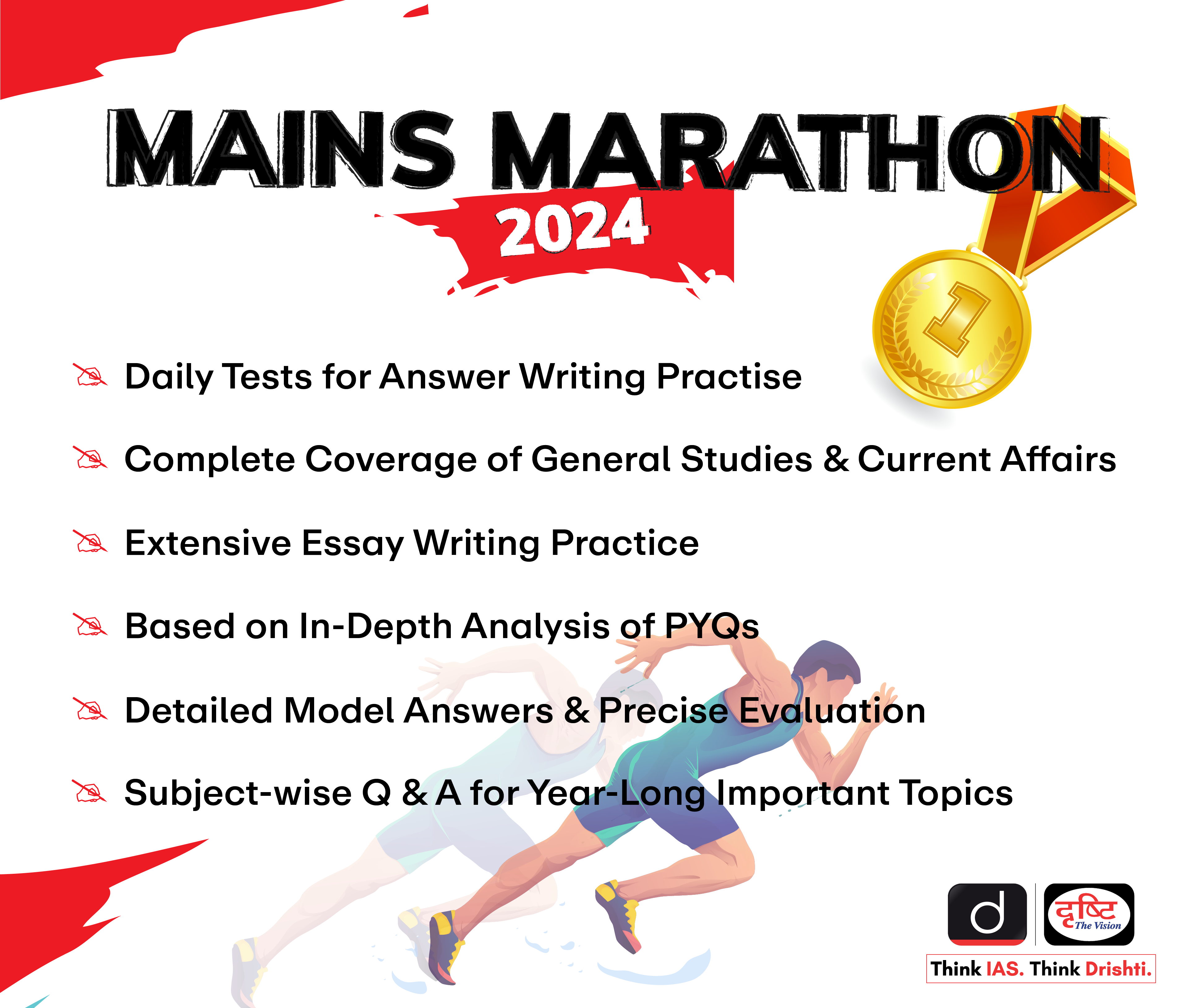
Disaster Management
Cloudbursts in Himachal Pradesh
For Prelims: Cloudbursts, Flash Floods, Himalayas, National Disaster Management Authority, Internal Displacement Monitoring Centre,
For Mains: Causes, Impact and Mitigation from Cloudbursts and Flash floods, Factors Affecting the Rainfall in India, Mitigation measures for Flood Disaster
Why in News?
Recently, a cloudburst, leading to flash floods in Himachal Pradesh has killed many people and several missing.
- These floods caused significant destruction, including the washing away of several buildings, bridges, and roads, according to officials.
What is a Cloudburst?
- About:
- According to the India Meteorological Department (IMD), cloudbursts are sudden, heavy rainstorms where more than 10 cm of rain falls in less than an hour over a small area, of about 10 square km. They often happen in mountainous areas, especially in the Himalayas.
- In the Indian Subcontinent, it generally occurs when a monsoon cloud drifts northwards, from the Bay of Bengal or the Arabian Sea across the plains then on to the Himalaya which sometimes brings 75 mm of rain per hour.
- Causes:
- Cloudbursts occur when strong upward currents of hot air prevent raindrops from falling, allowing them to grow larger while new smaller drops form below.
- This leads to a significant accumulation of water in the atmosphere, which is released abruptly when the upward currents weaken.
- Cloudbursts frequently occur in the hilly and mountainous areas of the Indian subcontinent, largely due to the region's complex topography, which facilitates orographic lifting.
- Orographic lifting occurs when air rises and cools as it travels up the windward side of a mountain.
- This process enhances cloud development and rainfall as moist air ascends over the mountains, with monsoon dynamics and localised weather patterns further influencing these intense precipitation events.
- Cloudburst are Different from Rainfall:
- Rain is condensed water falling from a cloud while cloudburst is a sudden heavy rainstorm.
- Rain over 10 cm per hour is categorised as a cloudburst.
- The cloudburst is a natural phenomenon, but occurs quite unexpectedly, very abruptly, and rather drenching.
- Prediction:
- There is no satisfactory technique for anticipating the occurrence of cloud bursts through satellites and ground monitoring stations because they develop over a small area and for a period of time.
- A very fine net work of radars is required to be able to detect the likelihood of a cloud burst and this would be expensive.
- Only the areas likely to receive heavy rainfall can be identified on a short range scale. Much of the damage can be avoided by way of identifying the areas and the meteorological situations that favour the occurrence of cloud bursts.
- Examples of Cloudbursts:
- Uttarakhand Cloudburst (July 2021): Devastating cloudbursts in Chamoli, Uttarkashi, and Pithoragarh caused flash floods, landslides, and extensive damage to infrastructure and lives.
- Himachal Pradesh Cloudburst (August 2020): Cloudbursts in Kullu, Lahaul-Spiti, and Kinnaur triggered landslides and flash floods, damaging roads, bridges, and houses.
What are the Consequences of Cloudbursts?
- Flash floods: Flash floods are sudden, localised surges in water levels during or after intense rainfall.
- Flash flooding starts within 6 or 3 hours of heavy rainfall. It is typically caused by intense thunderstorms but can also result from dam or levee breaks and mudslides.
- Factors like rainfall intensity, location, land use, topography, vegetation, soil type, and water content determine the speed and location of flash flooding.
- Landslides: A landslide is a mass movement of material, such as rock, earth or debris, down a slope. It can happen suddenly or more slowly over long periods of time.
- Factors like heavy rainfall, erosion, and weathering can trigger landslides.
- In India, landslides account for about 8% of global fatalities, with 847 deaths and thousands displaced from 2001 to 2021, according to research from IIT-Madras.
- Around 13.17% of India’s area is susceptible to landslides, with 4.75% designated as "very highly susceptible."
- Sikkim is the most prone state, while Kerala has over 14% of its land in the very high susceptibility category.
- Mudflows: It is a type of water flow characterised by its high density and viscosity, containing significant amounts of suspended particles and silt.
- Mudflow can only transport and deposit the coarsest materials, leading to irreversible sediment entrainment, and it typically does not flow as far as regular water streams.
What is the Impact of Climate Change on Cloudburst?
- Increased Atmospheric Moisture: Rising global temperatures allow the atmosphere to hold more moisture. This moisture-laden air can lead to more intense cloud formation and increased potential for cloudbursts, especially in mountainous areas like the Himalayas.
- Changes in Precipitation Patterns: Climate change can shift precipitation patterns, causing some regions to experience prolonged dry periods while others face more intense rainfall events.
- Altered Atmospheric Stability: Higher temperatures can destabilise the atmosphere, leading to increased convective activity and more frequent thunderstorms, which are often linked to cloudbursts.
- Glacier Retreat and Snowmelt: Melting glaciers in regions like the Himalayas, driven by rising temperatures, are releasing water more quickly, potentially contributing to cloudburst events.
- Land Use Changes: Human activities such as deforestation and urbanisation can alter local climates and precipitation patterns, affecting microclimates in mountainous areas and potentially influencing cloudburst occurrences.
What are the Ways to Mitigate the Devastating Impact of Cloudbursts?
- Early Warning Systems: Develop effective early warning systems to predict cloudbursts and provide timely alerts, allowing people to prepare and evacuate if necessary.
- Urban Planning and Infrastructure: Invest in resilient urban planning and infrastructure, such as stormwater drainage systems, retention ponds, and green spaces, to manage excess water and reduce flooding.
- Watershed Management: Implement practices to manage watersheds, like reducing soil erosion and increasing soil infiltration, to help control water flow and lessen the impact of cloudbursts.
- Reforestation and Green Infrastructure: Plant trees and maintain green areas to absorb excess water, reduce soil erosion, and stabilise slopes, helping to mitigate cloudburst effects.
- Awareness and Education: Educate communities about cloudburst risks and train them on response and evacuation procedures to ensure they take necessary precautions.
- Sustainable Land Use Practices: Promote land use practices that reduce vulnerability to cloudbursts, such as avoiding construction in flood-prone areas, controlling deforestation, and implementing soil conservation measures.
- International Cooperation: Work with neighbouring countries and international organisations to share best practices, technology, and resources for managing cloudbursts, especially in shared river basins.
Drishti Mains Question:
What are Cloudbursts and what are its mitigation strategies?
UPSC Civil Services Examination Previous Year’s Question (PYQs)
Prelims:
Q. La Nina is suspected to have caused recent floods in Australia. How is La Nina different from El Nino? (2011)
- La Nina is characterised by an usually cold ocean temperature in the equatorial Indian Ocean whereas El Nino is characterised by unusually warm ocean temperature in the equatorial Pacific Ocean.
- El Nino has an adverse effect on the south-west monsoon of India but La Nina has no effect on the monsoon climate.
Which of the statements given above is/are correct?
(a) 1 only
(b) 2 only
(c) Both 1 and 2
(d) Neither 1 nor 2
Ans: (d)
Mains
Q. With reference to the National Disaster Management Authority (NDMA) guidelines, discuss the measures to be adopted to mitigate the impact of recent incidents of cloudbursts in many places of Uttarakhand. (2016)


Indian Polity
Judicial Audit of Law
For Prelims: Supreme Court of India,Public Interest Litigation (PIL), National Food Security Act (NFSA),Sexual Harassment of Women at Workplace (Prevention, Prohibition and Redressal) Act, 2013.
For Mains: Judicial Review and the Role of the Judiciary, Welfare Legislation in India, Slum Redevelopment Policies, Accountability in Governance, Judicial Activism vs. Judicial Restraint, Urbanisation and Housing Challenges
Why in News?
Recently, the Supreme Court of India recently upheld the judiciary's authority to direct the government to conduct a "performance audit" of its statutory laws.
- This ruling emerged from an appeal regarding an Act for slum area development in Maharashtra, highlighting concerns over the law's effectiveness in improving conditions for its intended beneficiaries.
What is the Supreme Court's Ruling?
- The Supreme Court directed the Bombay High Court to conduct a performance audit of the Maharashtra Slum Areas (Improvement, Clearance and Redevelopment) Act, 1971, due to a significant backlog of over 1,600 pending cases related to the Act.
- The Court highlighted that while the Act aims to provide housing and dignity to marginalised individuals, its implementation has led to extensive litigation, undermining its objectives.
- The Court emphasised that the judiciary has both the power and duty to ensure laws are effective. The Court noted that if a law fails to benefit its intended recipients, a performance audit is warranted.
- Additionally, the Court stressed the importance of "institutional memory" in evaluating legislation's long-term impact.
What are the Implications of this Judgment?
- Judicial Activism: It marks a shift towards proactive judicial involvement in governance, wherein the judiciary can act as a facilitator of justice, stepping in when bureaucratic delays hinder the enforcement of statutory provisions.
- This could set a precedent for similar audits of other welfare laws and schemes.
- Performance Audit: The performance audit aims to evaluate the effectiveness of the Act and identify systemic issues contributing to litigation.
- This could lead to necessary reforms in the law, enhancing its efficacy in achieving its intended goals.
- The fear of a performance audit of the law may compel legislatures to scrutinise laws more thoroughly before and during their promulgation to eliminate any inconsistencies and shortcomings.
- Legislature and Executive Accountability: The ruling reinforces the constitutional duty of the legislature and executive to frame, monitor and assess the impact of legislation. This may lead to increased accountability and responsiveness from government authorities in implementing welfare laws.
- Focus on Marginalised Communities: The Court’s emphasis on the law's intent to benefit marginalised groups underscores the need for policies that genuinely address their needs. This could stimulate further legal and policy initiatives aimed at protecting vulnerable populations.
- The Supreme Court's observations on the Act could lead to major reforms, creating a better framework for slum redevelopment and improving living conditions for affected communities.
What are the Previous Rulings of the Supreme Court Related Judicial Activism?
- Anun Dhawan & Ors. vs. Union of India, 2024:
- In this, activists filed a Public Interest Litigation (PIL) advocating for the establishment of community kitchens to address hunger and malnutrition. The petition highlighted alarming child mortality rates due to these issues and argued that the situation violates fundamental rights, including the right to food and life.
- Supreme Court Judgment: In this, the Supreme Court declined to direct states to implement a specific scheme for community kitchens to combat hunger and malnutrition.
- The court emphasised the limited scope of judicial review concerning government policy matters, stating that it cannot mandate states to adopt a particular policy simply because an alternative might be considered better.
- Instead, it acknowledged the existing frameworks under the National Food Security Act (NFSA) and left it to states and union territories to explore alternative welfare schemes as they saw fit.
- Vishaka vs. State of Rajasthan, 1997:
- The case is a landmark judgment in India that established crucial guidelines to prevent sexual harassment in the workplace.
- In this, the Supreme Court laid down comprehensive guidelines named Vishakha guidelines, outlining definitions, employer obligations, complaint mechanisms, and the need for training.
- This ruling led to the enactment of the Sexual Harassment of Women at Workplace (Prevention, Prohibition and Redressal) Act, 2013, significantly enhancing workplace safety for women.
What are the Reasons for the Legislature's Enactment of Ineffective Laws?
- Complexity of Issues: India’s diverse population and interconnected social, economic, and environmental problems make it difficult to draft universally effective laws.
- Lack of Research and Data: Many laws are created without sufficient empirical evidence or thorough impact assessments, leading to ineffective solutions.
- Example: Lack of scrutiny by the Joint Parliamentary Committee (JPC) on three farm laws passed in Parliament led to limited opportunities for detailed scrutiny and public input.
- Political Pressures: Partisan politics and short-term electoral pressures can overshadow public interest, resulting in poorly designed legislation.
- Bureaucratic Challenges: Resistance to change and limited resources within the bureaucracy can hinder the implementation and enforcement of new laws.
- Inadequate Stakeholder Consultation: Limited engagement with civil society and marginalised groups can lead to laws that fail to address real needs.
- For Example, the Forest Rights Act (FRA) of 2006 aims to protect the rights of indigenous and tribal communities over forest land and resources. However, its implementation has struggled due to inadequate consultation with the local communities, hindering the effective recognition of their rights.
- Overlapping Jurisdictions: Conflicting laws and jurisdictional disputes can create confusion and inefficiencies in enforcement.
- For Example, Land acquisition laws at both the central and state levels can create conflicts regarding land use and compensation practices.
- Drafting Quality: Ambiguous language and technical complexity in laws can result in misinterpretation and limited public understanding.
Way Forward
- Enhanced Stakeholder Engagement: Involve civil society, experts, and affected communities in the lawmaking process to ensure laws are practical and effective.
- Example: The UK's Citizen Space platform allows for public consultation on proposed legislation, ensuring that diverse voices are heard.
- A similar initiative in India could lead to laws that better reflect the needs of the people.
- Data-Driven Legislation: Invest in research and data collection to inform policy decisions, ensuring laws address root causes and are based on empirical evidence.
- Streamlined Bureaucratic Processes: Reduce bureaucratic delays by simplifying administrative procedures and ensuring timely rule-making to facilitate effective law implementation.
- Clear Drafting Standards: Establish guidelines for clear and unambiguous drafting of laws to minimise misinterpretation and ensure consistent enforcement.
- Example: The Plain Language Commission in the UK promotes clear and concise legal writing. India could benefit from similar guidelines to improve the readability of its laws.
- Robust Monitoring and Evaluation: Implement comprehensive mechanisms to assess the effectiveness of laws post-enactment, allowing for necessary adjustments and improvements.
- Example: Australia's Regulatory Impact Analysis (RIA) system is designed to evaluate the potential costs and benefits of proposed regulations prior to their implementation, ensuring that the regulations are both efficient and effective.
|
Drishti Mains Question: Discuss the concept of judicial audit of law in the context of ensuring accountability and transparency in the legislative process. |
UPSC Civil Services Examination, Previous Year Questions (PYQs)
Prelims
Q. With reference to the Indian judiciary, consider the following statements: (2021)
- Any retired judge of the Supreme Court of India can be called back to sit and act as a Supreme Court judge by the Chief Justice of India with the prior permission of the President of India.
- A High Court in India has the power to review its own judgement as the Supreme Court does.
Which of the statements given above is/are correct?
(a) 1 only
(b) 2 only
(c) Both 1 and 2
(d) Neither I nor 2
Ans: (c)


International Relations
India-Vietnam Enhance Comprehensive Strategic Partnership
For Prelims: ASEAN, Renewable energy,Indo-Pacific region, South China Sea, Mekong Ganga Cooperation, VINBAX-2023, MILAN International Maritime Exercise
For Mains: Comprehensive strategic partnership, Look East to Act East, Economic Diplomacy
Why in News?
India and Vietnam have unveiled a new plan aimed at bolstering their bilateral ‘comprehensive strategic partnership’ over the next five years.
- This initiative was discussed during a bilateral meeting between the Indian Prime Minister and Vietnamese Prime Minister Pham Minh Chinh in New Delhi.
- The agreement signifies a deepening of ties between the two nations, with a focus on various sectors including trade, digital payments, and defence.
What are the Key Highlights of the Bilateral Meeting?
- New Plan of Action: India and Vietnam agreed on a new plan of action for their comprehensive strategic partnership established in 2016, which will be implemented over the next five years (2024-2028).
- Objectives of the plan include strengthening bilateral trade and economic cooperation. Enhancing collaboration in technology and development, and fostering partnerships in defence and security.
- Digital Payment Connectivity: The PM of India announced that the central banks of both countries reached an agreement to establish digital payment connectivity, enhancing financial transactions between the two nations.
- Like India, Vietnam is also embracing digital payments, including developing cross-border payment connectivity for retail transactions with other ASEAN countries.
- Credit Line Extension: India will extend a USD 300 million credit line to Vietnam to support its military security and development projects.
- The inauguration of an Army Software Park in Nayachang, funded by an Indian grant, and increased cooperation on terrorism and cyber security were highlighted.
- MoUs Signed: Six Memorandums of Understanding (MoUs) were signed, covering various areas including Agricultural Research, Customs capacity building, Law and justice, Radio & television, and Traditional medicines.
- Trade and Economic Goals: Vietnam proposed raising annual bilateral trade to USD 20 billion from the current USD 14.8 billion.
- The two countries agreed to expedite the review of the ASEAN-India Trade in Goods Agreement to enhance trade.
- Vietnam welcomed Indian investments in IT, manufacturing, textiles, semiconductors, and renewable energy.
- Strategic Alignment: Both countries committed to strengthening cooperation in the Indo-Pacific region, focusing on maintaining freedom of navigation and overflight in the South China Sea.
- They emphasised the peaceful settlement of disputes based on international law, particularly the United Nations Convention on the Law of the Sea (UNCLOS) of 1982.
- Economic Diplomacy Dialogue: A new economic diplomacy dialogue will be established at the deputy foreign minister level to address trade and investment issues.
Key Facts About Vietnam
- Capital: Hanoi, Official Language: Vietnamese.
- Major Mountain Range: Annam Cordillera.
- Major Rivers: Mekong River (south) and Red River (north), which form fertile deltas that support the majority of the population and agriculture.
- Notable Wildlife: Giant catfish, Indochinese tigers, Saola antelopes, and Sumatran rhinos.
- Deforestation has reduced forest cover to about 19%; government replanting efforts are underway to restore woodlands.
- Government Structure: Socialist state governed by the Communist Party of Vietnam; a president serves as head of state, while a prime minister runs the government.
- Economy: Main exports include crude oil, seafood, rice, shoes, wooden products, machinery, electronics, coffee, and clothing.
How has been the India-Vietnam Relations?
- Historical Ties and Diplomatic Relations: India and Vietnam enjoy a Comprehensive Strategic Partnership.
- Mahatma Gandhi and President Ho Chi Minh exchanged messages during their independence struggles.
- India established diplomatic relations with Vietnam in 1972. Relations were elevated to a Comprehensive Strategic Partnership in 2016.
- The development of India-Vietnam relations are currently guided by a "Joint Vision for Peace, Prosperity and People" adopted in 2020.
- In 2022, the two countries celebrated the 50th anniversary of the establishment of diplomatic relations and both countries are working together actively to further strengthen their multi-dimensional cooperation.
- Institutional Mechanisms:
- The 18th Joint Commission Meeting (JCM) on Economic, Trade, Scientific, and Technological Cooperation was held on 16th October 2023 in Hanoi.
- Previous JCM meetings, Foreign Office Consultations, and Strategic Dialogues at Secretary-level help review bilateral cooperation.
- The 18th Joint Commission Meeting (JCM) on Economic, Trade, Scientific, and Technological Cooperation was held on 16th October 2023 in Hanoi.
- Trade, Economic, and Development Cooperation:
- Trade Statistics: India-Vietnam trade from April 2023 to March 2024 was USD 14.82 billion.
- India's exports to Vietnam were USD 5.47 billion, and imports were USD 9.35 billion.
- The ASEAN-India Trade in Goods Agreement concluded in 2009 provides a preferential trade regime between India and Vietnam and that Agreement is currently under review.
- Key Exports and Imports:
- India exports engineering goods, agricultural products, chemicals, pharmaceuticals, electronic goods, minerals, textiles, and plastics to Vietnam.
- Imports from Vietnam include computer and electronic goods, mobile phones, machinery, steel, chemicals, footwear, garments, and wooden products.
- Investments: Indian investments in Vietnam are around USD 2 billion, including energy, mineral processing, agro-processing, IT, auto components, pharmaceuticals, hospitality, and infrastructure sectors.
- Vietnam's investments in India are about USD 28.55 million, primarily in consumer goods, electronics, construction, IT, and pharmaceuticals.
- Trade Statistics: India-Vietnam trade from April 2023 to March 2024 was USD 14.82 billion.
- Development Partnership: Under the Mekong-Ganga Cooperation framework, India has completed about 45 Quick Impact Projects in over 35 provinces of VietNam, with another 10 projects at the implementation stage.
- Mekong-Ganga Cooperation (MGC) established in 2000, includes six member countries: Cambodia, Lao PDR, Myanmar, Thailand, VietNam, and India.
- The cooperation focuses on key sectors: tourism, culture, education, information technology, telecommunications, and transport.
- India has supported the conservation and restoration of the UNESCO World Heritage site of 'My Son' in Quang Nam Province, Central Vietnam.
- The Archaeological Survey of India completed the conservation and restoration of A, H and K group of temples at the My Son complex site in 2022.
- Defence Cooperation: India and Vietnam have a strong defence and security cooperation, with a 2009 MoU on Defence Cooperation and a 2015 Joint Vision on Defence Cooperation providing the framework.
- In 2022, the two countries signed a new "Joint Vision Statement on India-Vietnam Defence Partnership towards 2030" and a "Memorandum of Understanding on Mutual Logistics Support".
- In 2023, Vietnam was gifted an indigenously built missile corvette INS Kirpan.
- Bilateral military-to-military cooperation includes staff talks, exercises, training, visits, and exchanges.
- VINBAX-2023 Military Exercise.
- In February 2024, a Vietnamese navy ship participated in the MILAN international maritime exercise in India.
- Cultural Exchanges: MoUs between Indian and Vietnamese institutions promote academic and cultural exchanges.
- Conferences and summits like the Northeast India Festival in Ho Chi Minh City foster bilateral cultural ties.
- Buddhist links between Vietnam and India represent ancient civilisational connections. Vietnamese Buddhist scholars and pilgrims regularly travel to India, including to the Vietnamese Buddhist pagoda in Bodhgaya.
- Yoga is immensely popular across Vietnam, with hundreds of yoga clubs and numerous Indian yoga teachers offering their services.
- The Swami Vivekananda Indian Cultural Centre in Hanoi promotes further understanding of India and fosters closer links between the two countries through various cultural programs and activities.
|
Drishti Mains Question: Q. Discuss the significance of the Comprehensive Strategic Partnership established between India and Vietnam |
.
UPSC Civil Services Examination, Previous Year Question (PYQ)
Q. In the Mekong-Ganga Cooperation, an initiative of six countries, which of the following is/are not a participant/ participants? (2015)
- Bangladesh
- Cambodia
- China
- Myanmar
- Thailand
Select the correct answer using the code given below:
(a) 1 only
(b) 2, 3 and 4
(c) 1 and 3
(d) 1, 2 and 5
Ans: (c)
Q. Consider the following pairs: (2020)
| River | Flows into | |
| 1. | Mekong | Andaman Sea |
| 2. | Thames | Irish Sea |
| 3. | Volga | Caspian Sea |
| 4. | Zambezi | Indian Ocean |
Which of the pairs given above is/are correctly matched?
(a) 1 and 2 only
(b) 3 only
(c) 3 and 4 only
(d) 1, 2 and 4 only
Ans: (c)


Important Facts For Prelims
Chinese Bridge on Pangong Lake
Why in News?
China has completed and operationalised a bridge connecting the north and south banks of the Pangong Tso lake in Eastern Ladakh.
- It allows China’s People's Liberation Army (PLA) to significantly reduce the time needed to mobilise its troops and tanks.
What is the Pangong Lake Dispute?
- About the Lake:
- Pangong Tso is a long, narrow, deep, endorheic lake at over 14,000 ft in Ladakh in trans-Himalays.
- India and China have around one-third and two-thirds of Pangong Tso Lake respectively.
- The eastern end of Pangong Tso lies in Tibet.
- It is a tectonic lake formed when India came out of Gondwanaland and pressed against Asia to create a Himalayan mountain range while occupying the space that originally was the Tethys Ocean.
- Disputed “Fingers” Area:
- The northern bank of the lake has spurs known as "fingers."
- India claims the LAC runs through Finger 8 but controls up to Finger 4, while China claims the LAC is at Finger 2.
- Recent tensions have led to Chinese forces blocking Indian soldiers from moving beyond Finger 2.
- Strategic Significance:
- It lies in the Chushul approach path, a potential route for Chinese offensives.
- In the 1962 war, China launched its main offensive in this area, and Indian forces fought heroically at Rezang La.
- China has built motorable roads along its banks of the lake and has a large-scale model of the area at its Huangyangtan base.
- It lies in the Chushul approach path, a potential route for Chinese offensives.
What are Indian Concerns Regarding the Bridge on Pangong Lake?
- It will give Chinese troops and tanks faster access to the lake's southern banks, including Rezang La, where Indian forces outmanoeuvred them in 2020.
- The Indian Army captured key heights on the southern bank of Pangong Tso lake in 2020. The new Chinese bridge was built in response to this.
- It will reportedly strengthen the PLA's Moldo Garrison on the Pangong lake's southern bank.
- It will also enable the PLA to rapidly reinforce the Moldo Garrison by deploying motorized brigades based in Rutog base.
India and China Border Dispute
- The India-China border (3,488-kilometre) is not clearly defined in some areas, and there is no mutually agreed Line of Actual Control (LAC) in certain stretches. The LAC was established after the 1962 Indo-China war.
- The India-China border is divided into three sectors:
- Western Sector: Ladakh
- Middle Sector: Himachal Pradesh and Uttarakhand
- Eastern Sector: Arunachal Pradesh and Sikkim
- The main areas of dispute are Aksai Chin, located in the western sector, and Arunachal Pradesh, in the eastern sector.
- Aksai Chin is administered by China as part of Xinjiang, but India claims it as part of Ladakh.
- China claims the entire state of Arunachal Pradesh, calling it "South Tibet," while India is an integral part of its territory.
Other Chinese Military Infrastructure Along LAC
- Connectivity: Construction of road from north of Samzungling to the Galwan Valley,
- Underground Bunkers: Construction of new underground bunkers, camps, shelters, artillery positions, radar sites, and ammunition dumps along the LAC.
- Air Combat: Deployment of additional fighters, bombers, reconnaissance aircraft, and drones to counter high-altitude combat challenges.
- Border Villages: Construction of new dual-use ‘Xiaokang’ border villages.
- Rear Area Infrastructure: Strengthening of military and transport infrastructure in buffer zones on both banks of Pangong Tso.
How India Responded with Military Infrastructure Along LAC?
- Road Construction: Nearly 6,000 km of roads constructed in border areas in the past five years, with 2,100 km along the northern borders. E.g., Darbuk-Shyok-Daulat Beg Oldie (DSDBO) road.
- Tunnels: All-weather connectivity projects in Ladakh e.g., Zojila and Z-Morh tunnels and Arunachal Pradesh e.g., Sela tunnel and Nechiphu bridge are advancing.
- Troop Habitat: Rs 1,300 crore spent in the last three years on infrastructure and habitat in Ladakh, including green solutions like Sheela shelters and fuel cells.
- Air Power Infrastructure: Increasing availability of heavy lift and logistics helicopters for resupplying materials e.g., deployment of C17 Globemaster and C-130J Super Hercules.
UPSC Civil Services Examination, Previous Year Question (PYQ)
Prelims:
Q. Siachen Glacier is situated to the (2020)
(a) East of Aksai Chin
(b) East of Leh
(c) North of Gilgit
(d) North of Nubra Valley
Ans: (d)
Mains:
“China is using its economic relations and positive trade surplus as tools to develop potential military power status in Asia”. In the light of this statement, discuss its impact on India as her neighbour. (2017)


Important Facts For Prelims
India’s Engagement at ASEAN Meet
Why in News?
Recently, India's External Affairs Minister's (EAM) visit to Vientiane, Laos, for the Association of Southeast Asian Nations (ASEAN) meetings has garnered significant attention. This visit has provided a platform for high-level dialogues with several global leaders, aiming to strengthen bilateral relations.
What are the Key Highlights of the ASEAN Meet?
- ASEAN in India’s Foreign Policy: EAM emphasised ASEAN as the cornerstone of India's Act East Policy and Indo-Pacific vision.
- 2024 marks 10 years since India’s Act East Policy was announced at the 9th East Asia Summit in 2014.
- The policy aims to enhance commerce, connectivity, and capacity building. strategic, and cultural relations with the Asia-Pacific region.
- India views the ASEAN partnership as crucial for its political, economic, and security cooperation.
- Highlighted India's vision for the Indo-Pacific in promoting a free, open, inclusive, and peaceful region based on a rules-based international order.
- Focus Areas: Discussions involved expanding people-to-people linkages and bilateral cooperation.
- The visit aims to solidify partnerships and advance mutual interests in the region.
What is the Association of Southeast Asian Nations (ASEAN) ?
- About: The ASEAN is a regional intergovernmental organization founded on 8th August 1967, in Bangkok, Thailand.
- Creation was formalised through the ASEAN Declaration
- Initially signed by Indonesia, Malaysia, the Philippines, Singapore, and Thailand.
- ASEAN was expanded to include Brunei Darussalam (1984), Vietnam (1995), Laos PDR and Myanmar (1997), and Cambodia (1999).
- The region has one of the largest economies in the world; believed to have the 4th-largest economy in the world by 2050.
- The bloc’s biggest success in recent years has been promoting economic integration among members. It also helped negotiate the Regional Comprehensive Economic Partnership, the world’s largest free trade agreement.
- ASEAN Charter (2008): Provided ASEAN with a legal status and institutional framework. It codified norms, rules, and values, enhancing accountability and compliance.
- ASEAN Summit: The highest policy-making body, comprising the Heads of State or Government of ASEAN member states, meets twice annually.
- The first summit was held in Bali, Indonesia, in 1976.
- India-ASEAN Relations:
- India began formal engagement with ASEAN in 1992 as a "Sectoral Dialogue Partner" and subsequently as a "Dialogue Partner" in 1995.
- Partnership elevated to a Strategic Partnership in 2012 and a Comprehensive Strategic Partnership in 2022.
- India began formal engagement with ASEAN in 1992 as a "Sectoral Dialogue Partner" and subsequently as a "Dialogue Partner" in 1995.
Indo-Pacific Region
- The Indo-Pacific region is a vast geographic area encompassing the Indian and western/central Pacific Oceans, home to diverse cultures and ecosystems.
- It has geopolitical importance, with major powers like China, India, Japan, and the US, and accounts for more than half the world’s population, and it accounts for 60% of global GDP as well as 2/3rd of global economic growth.
- However, it faces security challenges like territorial disputes, piracy, terrorism, and nuclear proliferation, as well as environmental concerns.
- China's rapid growth has contributed to the region's increasing global significance.
- Indian vision for Indo-Pacific: India advocates a "free, open and inclusive Indo-Pacific" and calls for peaceful resolution of disputes while respecting sovereignty and territorial integrity of all nations.
UPSC Civil Services Examination, Previous Year Questions (PYQs)
Prelims
Q2. Consider the following countries: (2018)
- Australia
- Canada
- China
- India
- Japan
- USA
Which of the above are among the ‘free-trade partners’ of ASEAN?
(a) 1, 2, 4 and 5
(b) 3, 4, 5 and 6
(c) 1, 3, 4 and 5
(d) 2, 3, 4 and 6
Ans: (c)
Q1. India is a member of which among the following? (2015)
- Asia-Pacific Economic Cooperation
- Association of South-East Asian Nations
- East Asia Summit
Select the correct answer using the code given below:
(a) 1 and 2 only
(b) 3 only
(c) 1, 2 and 3
(d) India is a member of none of them
Ans: (b)
Q. The term ‘Regional Comprehensive Economic Partnership’ often appears in the news in the context of the affairs of a group of countries known as (2016)
(a) G20
(b) ASEAN
(c) SCO
(d) SAARC
Ans: (b)


Rapid Fire
Acharya Prafulla Chandra Ray
Recently, 2nd August was commemorated as the birthday of Acharya Prafulla Chandra Ray. Acharya Prafulla Chandra Ray:
- Often referred to as the "Father of Indian Chemistry," Prafulla Chandra Ray (1861-1944) was a distinguished Indian scientist and educator, recognized as one of the earliest modern chemical researchers in India.
- Trained at the University of Edinburgh, Ray spent many years at Presidency College and Calcutta University.
His Work:
- He is credited with discovering the stable compound Mercurous Nitrite in 1895.
- A staunch nationalist, Ray was committed to advancing Bengali enterprise and established the Bengal Chemical and Pharmaceutical Works in 1901.
- Ray was an active supporter of the Swadeshi Movement of 1905 and considered the use of Bideshi articles a crime of treason against India.
- Ray opposed the caste system and other irrational social practices, actively promoting social reform until his death.
Awards and Recognitions:
- Honored by the British Government, he received the title of Companion of the Indian Empire (CIE) and then with the Knighthood in 1919.
- In 1920, he was elected General President of the Indian Science Congress.
- In recognition of his contributions, India Post issued a postage stamp in his honor on 2nd August 1961, marking his birth anniversary.


Rapid Fire
Ministry of Mines Published Mineral Production Data
The Ministry of Mines published mineral production data in Quarter 1 of FY 2024-25.
- Iron ore (275 MMT) and limestone (450 MMT) accounted for about 80% of the total MCDR mineral production by value in FY 2023-24.
- India is the second largest aluminium producer, third largest limestone producer and fourth largest iron ore producer in the world.
- Globally, China is the largest producer of aluminium and limestone while Australia is the largest producer of iron ore.
- Odisha is the largest aluminium ore and iron ore producing state in India. Rajasthan has the highest share of limestone production in India.
- Continued growth in production of Aluminium ore, iron ore and limestone point towards continued strong economic activity in user sectors such as energy,
infrastructure, construction, automotive and machinery.
- Continued growth in production of Aluminium ore, iron ore and limestone point towards continued strong economic activity in user sectors such as energy,
- Mineral production was reported from 19 States of which the bulk of value of mineral production of about 97.04% was confined to 7 States only.
- Order of mineral production by share - Odisha (44.11%), Chhattisgarh (17.34%), Rajasthan (14.10%), Karnataka (13.24%), Jharkhand (4.36%), Madhya Pradesh (2.44%), and
Maharashtra (1.45%). - Remaining 12 States have cumulative share of less than 3% of total value


Rapid Fire
Refugees in J&K Get Land Ownership
- Source: IE
Recently, the Jammu and Kashmir (J&K) government granted proprietary rights to West Pakistan Refugees (WPRs) and individuals displaced during the 1965 India-Pakistan war.
- West Pakistani Refugees (WPRs) are individuals who migrated from West Pakistan to the erstwhile State of J&K (now UT) during the partition in 1947, primarily settling in the Jammu, Kathua, and Rajouri districts of the Jammu Division.
- This decision was made ahead of the Supreme Court's deadline of 30th September 2024, for conducting Assembly elections in the region.
- The move ended discrimination by granting these displaced persons rights to state land, aligning their rights with those of individuals displaced from Pakistan Occupied Jammu and Kashmir (PoJK).
- Earlier, WPR families were considered "non-state subjects" and couldn't vote in Jammu and Kashmir due to not being residents at the time of the 1947 Partition.
- They were granted domicile status and voting rights following the abrogation of Article 370 on 5th
August 2019.



